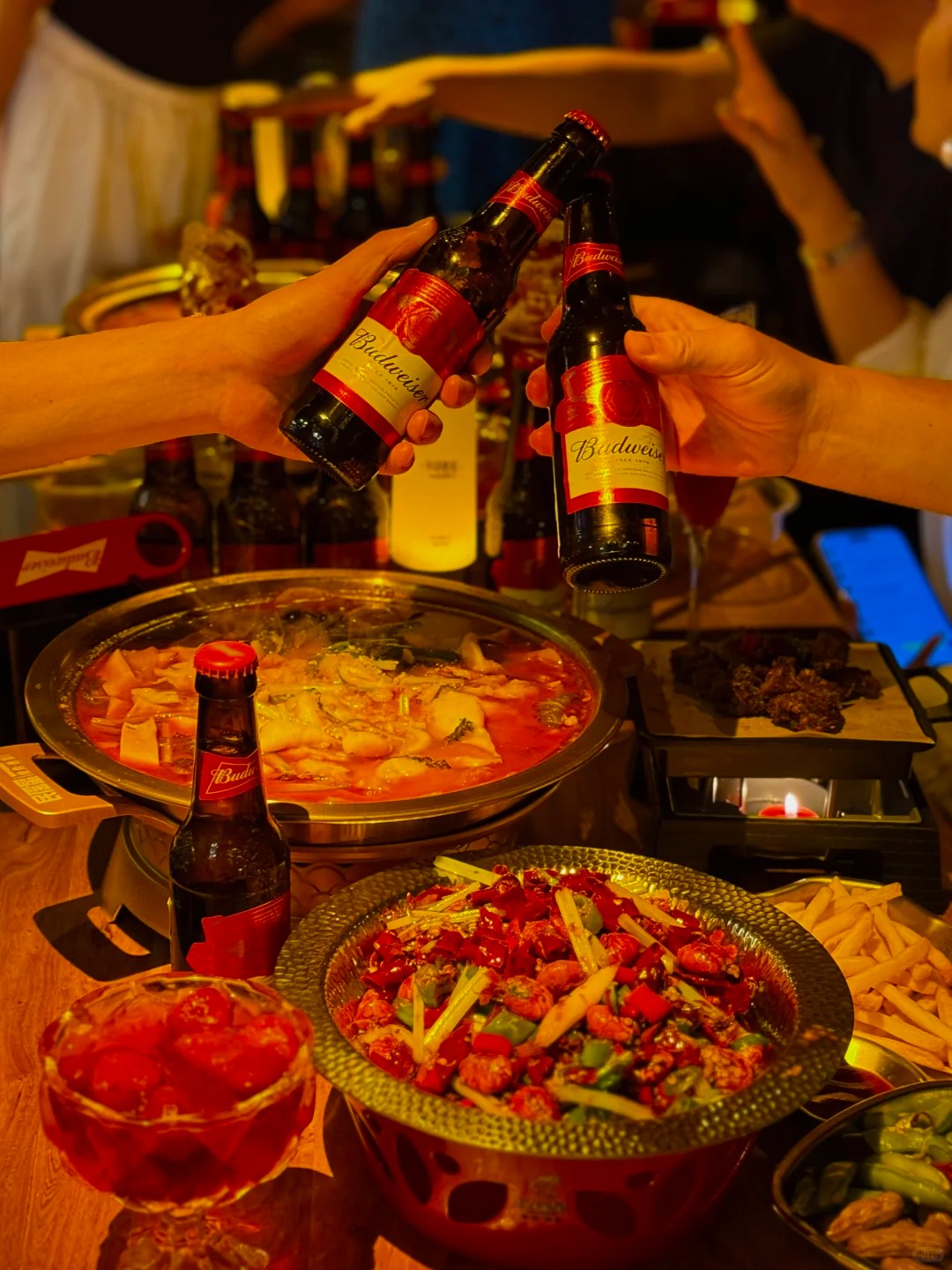If it’s your first time in the city, figuring out what to do in Shanghai can feel a bit overwhelming—and exciting. This vibrant metropolis blends old-world charm with futuristic flair. One moment you’re standing in a centuries-old garden; the next, you're sipping coffee in a high-rise overlooking the skyline.Whether you're into food, culture, shopping, or just soaking in city life, Shanghai has something for you. This guide breaks down 15 top experiences that highlight the best of what the city has to offer. If you’re wondering how to make the most of your visit, these picks are a great place to begin.
Want a bigger list of top picks beyond these 15? Check out this full 2025 guide to what to do in Shanghai.
What Are the must-visit attractions in Shanghai?
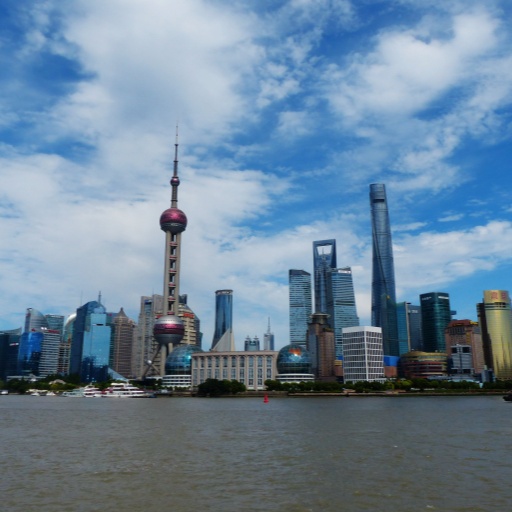
Shanghai Landmarks:The bund
1. The Bund
This iconic waterfront promenade offers unbeatable views of the city skyline. Whether you visit during the day or at night, walking the Bund is like flipping through the pages of Shanghai’s past and future. The west side is lined with colonial-era buildings in Gothic and Baroque styles, while the east side boasts futuristic skyscrapers. Come at sunrise for peaceful scenery or after sunset when the city lights create a magical atmosphere.
2. The Oriental Pearl Tower
With its distinctive pink spheres and space-age look, the Oriental Pearl Tower is one of Shanghai’s most recognizable landmarks. Head up to the observation deck and try standing on the glass floor if you dare. It gives you a bird’s-eye view of the Huangpu River and the city below. The tower also houses a small museum and a rotating restaurant.
3.Yu Garden
This classical Chinese garden dates back to the Ming dynasty and is a peaceful retreat from the busy city. Inside, you’ll find koi ponds, stone bridges, delicate pavilions, and ancient trees. It’s a great place to appreciate traditional Chinese landscaping and architecture. Nearby, the bazaar is full of snacks, trinkets, and tea shops.
4. Nanjing Road
If you love to shop, this is your paradise. Nanjing Road is packed with everything from luxury brands to street fashion. The eastern section is more commercial, while the western part near Jing’an has a mix of local boutiques and department stores. Be sure to come in the evening when the neon lights give the whole area a festive vibe.
5.The Shanghai Museum
Located in People’s Square, the museum is free and full of treasures. It’s one of the best places to learn about Chinese history and culture. The exhibits include bronzes, calligraphy, ceramics, and ethnic costumes. Plan at least two hours to browse the galleries and take in the architecture of the museum itself.
6.Shanghai Disneyland
Perfect for families or Disney fans, this theme park offers a magical experience with a Chinese twist. The layout is spacious, the rides are modern, and characters often greet you in Mandarin. Don’t miss the Pirates of the Caribbean ride—it’s one of the most high-tech in the world. Try to visit on a weekday to avoid the longest lines.
7. Zhujiajiao Ancient Town
Located about an hour from downtown, this water town is often called the Venice of Shanghai. It has arched stone bridges, canals, and ancient houses. You can take a boat ride, try street snacks, and explore temples. It’s a great way to slow down and see a more traditional side of Chinese life.
8. The Jade Buddha Temple
This active temple is home to two large jade Buddha statues imported from Burma. It’s a peaceful place to observe local religious practices. The scent of incense fills the air, and monks in robes walk quietly around the halls. Whether or not you practice Buddhism, the atmosphere is calm and respectful.
9.The Former French Concession
This historic area offers leafy streets, old villas, and a blend of East and West. It’s ideal for a morning walk or a lazy afternoon café stop. Many buildings here were once home to famous writers, politicians, and revolutionaries. Today, you’ll find hip shops, art galleries, and bakeries on every corner.
10.Tianzifang
Hidden within a maze of alleys, Tianzifang is where old Shanghai meets contemporary creativity. Former residences have been turned into art studios, boutique shops, and cozy restaurants. Come here to find unique gifts or watch an artist at work. The area is especially beautiful in the early evening when lanterns light up the lanes.
11. The City God Temple
This temple is dedicated to the protector of the city and is one of Shanghai’s most important Taoist temples. It’s located near the Yu Garden and is surrounded by a lively market. During festivals, the temple becomes even more vibrant with music, incense, and worshippers. Don’t forget to toss a coin into the wishing well!
12. People’s Park
This park in the city center is more than just green space. On weekends, it becomes a social hub, especially with the famous “marriage market.” Parents gather with profiles of their unmarried children in hopes of making a match. It’s a fascinating slice of local culture that you won’t see in a guidebook.
13. Longhua Temple
The oldest temple in Shanghai, Longhua has a peaceful garden, pagoda, and many halls for worship. Fewer tourists visit here, so it feels more authentic. The temple hosts traditional ceremonies during Chinese festivals, making it a great place to witness local customs.
14.M50 Creative Park
Located in a former industrial complex, M50 is now a hotspot for modern art. Local and international artists have studios here, and you can walk through exhibitions for free. Graffiti, sculpture, photography—you’ll find it all in this creative zone.
15.Xintiandi District
This upscale area combines historic architecture with stylish bars and restaurants. Start your night with dinner in one of the Shikumen-style houses, then move to a rooftop bar. The area is safe, walkable, and popular with both locals and expats.
Which places in Shanghai are great for a one-day tour?
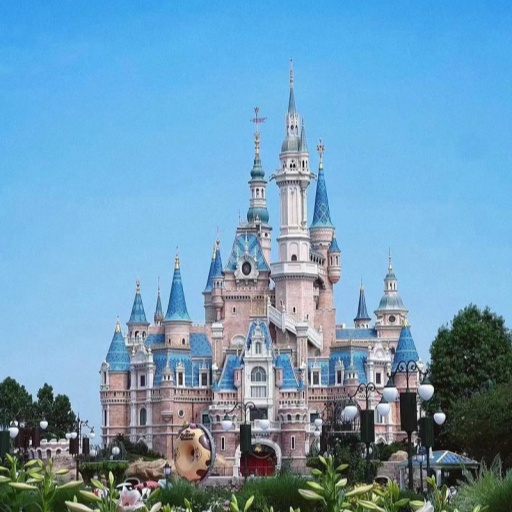
A One-Day Trip to Shanghai Disneyland
Shanghai Disneyland: A Magical World of Adventure and Wonder
Shanghai Disneyland is a magical destination where fantasy meets innovation. As the first Disney park in mainland China, it combines classic Disney charm with unique Chinese cultural elements. The park features six themed lands, including Tomorrowland, Fantasyland, and Treasure Cove, each offering immersive attractions, world-class shows, and interactive experiences.Whether you're a thrill-seeker, a Disney fan, or traveling with kids, Shanghai Disneyland promises a day full of wonder, excitement, and unforgettable memories. It’s not just a theme park—it’s a dream come to life.
Don't miss the world’s largest Disney castle – the Enchanted Storybook Castle – where you can dine, explore, and even take a boat ride underneath. Thrill-seekers should try TRON Lightcycle Power Run, a high-speed coaster with a futuristic vibe. Pirates of the Caribbean: Battle for the Sunken Treasure is a standout too, combining 3D effects with stunning visuals. Parades, shows, and fireworks make the experience even more magical.
People who has kids can begin your day in Fantasyland, where little ones will love classics like The Many Adventures of Winnie the Pooh, Dumbo the Flying Elephant, and Alice in Wonderland Maze. Stop by the Enchanted Storybook Castle to meet Disney princesses and snap some photos. Around noon, enjoy a kid-friendly meal at Tangled Tree Tavern. After lunch, take a calm boat ride in Voyage to the Crystal Grotto, then explore Toy Story Land with attractions like Rex’s Racer and Woody’s Roundup. Take breaks at baby care centers or playground areas when needed. Before heading out, find a comfy spot to watch the parade and evening fireworks — a magical way to wrap up the day for the whole family.
Aspects for Visitors:
- Location: 201 Renmin Avenue, People's Square, Shanghai, China.
- Operating Hours: Daily, 9 am – 5 pm (Last admission at 4 pm).
- Admission: Free (Online reservation required).
- Facilities: Wheelchair-accessible spaces, audio guides, gift shop, and café
Whether you're a thrill-seeker, a Disney fan, or traveling with kids, Shanghai Disneyland promises a day full of wonder, excitement, and unforgettable memories. It’s not just a theme park—it’s a dream come to life.
Zhujiajiao Ancient Town: A Charming Water Town Escape
Looking for a break from the big city? Head to Zhujiajiao! This ancient water town sits just one hour from downtown Shanghai. It’s over 1,700 years old and packed with history. Walk through narrow alleyways full of old-world charm. Cross stone bridges that arch over peaceful canals. Boats float by slowly, offering postcard-perfect views. Every corner feels like a scene from a Chinese painting. Locals hang laundry outside their wooden riverside homes. Small temples and shrines pop up along quiet paths. Zhujiajiao shows you a slower, simpler way of life.
Zhujiajiao isn’t just beautiful—it’s full of flavor and charm. Wander the old-town lanes and snack on sticky rice, grilled tofu, dumplings, and sweet rice wine. It’s a perfect place for a casual food crawl. After eating, browse souvenir shops for tea sets, silk scarves, and handmade jewelry. Visit the century-old post office or stroll through peaceful Kezhi Garden. Take a scenic boat ride with boatmen in traditional straw hats—perfect for photos. Every corner offers a taste of Zhujiajiao’s unique vibe.
Zhujiajiao makes for a super easy day trip. You can take a bus, metro, or private tour. Line 17 of the metro gets you there fast. Once you arrive, everything is walkable and simple. Start early to beat the crowds and the heat. Wear comfy shoes—the stone paths get slippery. Bring a camera—this town is very photogenic. It’s great for solo travelers, couples, or families. You don’t need a guide—just follow your curiosity. Enjoy the slower pace and soak in the views. Sit at a riverside café and sip some tea. Watch life unfold from your peaceful little table.
Key Details to Consider:
- Location: Located in Qingpu District, about 50 km from downtown Shanghai.
- Travel Time: Around 1–1.5 hours by car or metro (Line 17 to Zhujiajiao Station).
- Admission: Entry to the town is free, but a combined ticket (~¥60) is required for access to key attractions.
- Opening Hours: Main attractions usually open from 9:00 AM to 5:00 PM daily.
- Highlights:Stroll across the iconic Fangsheng Bridge, the largest stone arch bridge in the town, and take a gondola-style boat ride through the ancient waterways. Visit cultural sites like Ke Zhi Garden, Yuanjin Buddhist Temple, and the Post Office Museum to get a taste of local history and architecture. The old lanes are lined with tea houses, snack stalls, and souvenir shops that add to the town’s traditional charm.
Aspects, if applicable, often include:
- Boat Capacity: Small boats carry 4–6 passengers, ideal for couples or families.
- Price Range: Boat rides cost around ¥80–150 depending on distance and route.
- Weather Considerations:The experience is best enjoyed on dry days. Heavy rain may lead to boat service suspensions or slippery walkways.
Zhujiajiao Water Town is perfect for travelers seeking a quieter, culturally rich outing. Whether you're interested in photography, history, or simply relaxing by the water, this town offers a timeless side of Shanghai.
Which Shanghai Landmarks Should Be on Every First-Timer’s List?
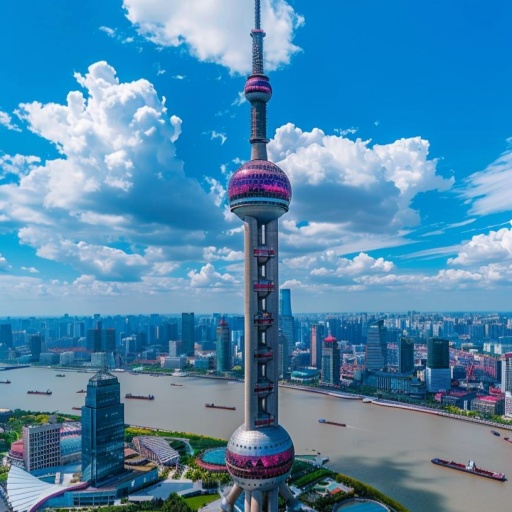
Shanghai Landmarks:The Oriental Pearl Tower
Admire the skyline from the Oriental Pearl Tower
The Oriental Pearl Tower is one of Shanghai’s most iconic landmarks and a must-visit attraction for first-time visitors. Standing at 468 meters tall, it was once the tallest structure in China and remains one of the tallest TV towers in the world. Located in the bustling Pudong district along the Huangpu River, the tower’s unique design features 11 spheres of varying sizes connected by three huge columns, symbolizing pearls falling onto a jade plate, reflecting Chinese cultural elements and futuristic architecture.
The Oriental Pearl Tower boasts multiple observation decks at different heights, giving visitors varied perspectives of Shanghai’s sprawling cityscape. The most popular is the main observation deck at 263 meters, where you can walk on a glass floor and look straight down at the city below — a thrilling experience for those not afraid of heights. For an even higher vantage point, the upper observation deck stands at 350 meters, providing a stunning 360-degree view that stretches to the distant horizon on clear days.
Tickets for these observation decks are often sold as a combined package, and it’s recommended to buy in advance or early in the day to avoid long queues. Besides the observation decks, there’s a rotating restaurant at 267 meters, where you can enjoy fine dining while slowly circling the city skyline. Nighttime visits are especially popular because the city lights transform Shanghai into a dazzling spectacle. Don’t forget your camera or smartphone to capture these incredible views!
The Oriental Pearl Tower is open daily, generally from 8:00 AM to 9:00 PM, but hours may vary depending on the season. To make the most of your visit, try to arrive early in the morning or later in the afternoon to avoid peak crowds. Weekdays are less busy compared to weekends and public holidays.For the best views, visit on a clear day, ideally in spring or autumn when the weather is mild and the skies are clearer. Evening visits offer the chance to see the city’s spectacular lights, but can be crowded. Tickets can be purchased online or at the tower itself, and combo packages often save money.
Walk the Bund at sunrise or sunset
The Bund is more than just a riverside walkway. It’s where Shanghai opens its heart. Early in the morning, the city feels calm. You’ll see joggers, tai chi groups, and locals sipping tea by the water. The sunlight reflects off the colonial buildings, casting golden hues across the pavement. The city’s past lives in these walls—old banks, trading houses, and hotels from a century ago. Walk slow. Let the atmosphere speak. The skyline across the river, still quiet at dawn, reminds you that Shanghai is always transforming.
Now return at sunset. Everything changes. The lights flicker on across the Huangpu. Skyscrapers glow, boats glide past, and people gather. Couples take selfies. Friends share snacks. The buzz builds. If you're looking for what to do in Shanghai that mixes history with beauty, this is it. Sunrise gives you calm; sunset gives you energy. No matter when you come, the Bund always shows a different face. You’ll feel the city’s rhythm in every step you take.
Discover serenity in the classical Yu Garden
Step through the gate and leave the city behind. Yu Garden feels like another world. It’s quiet, shaded, and full of charm. You’ll walk on zigzag bridges, past koi ponds and stone dragons. Every rock, plant, and pavilion has a purpose. Built over 400 years ago, the garden reflects ancient Chinese design at its finest. It’s a place for poetry, reflection, and balance. The garden was made for peace—and you’ll feel it. When planning what to do in Shanghai, don’t skip this spot. It brings calm in a city that rarely slows down.
Take your time here. Sit on a bench. Listen to birds, watch fish swim, and notice the details—the curve of a rooftop, the carving in a wooden beam. Yu Garden teaches you something important: you don’t have to rush to enjoy Shanghai. You just have to look closely. Many tourists pass through too fast. Don’t be one of them. Breathe in the history. Let it settle. If you want a break from the city’s rush, this is the perfect place. It shows another side of Shanghai—one that’s timeless and true.
What Are the Best Ways to Experience Local Culture?
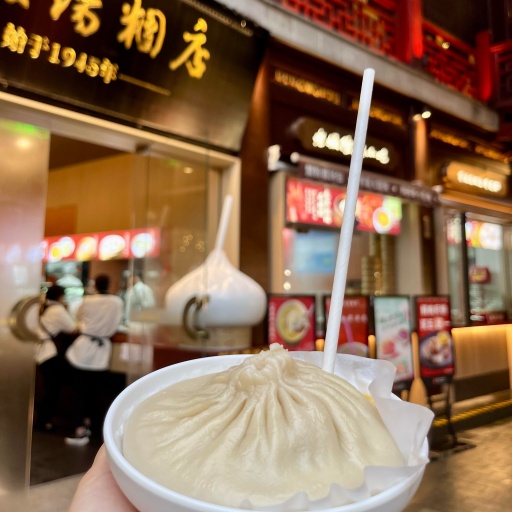
Must-Try Snack at Chenghuangmiao: Xiao Long Bao (Soup Dumplings)
Try traditional snacks at City God Temple Market
If you're wondering what to do in Shanghai to truly feel the heartbeat of the city, start with your stomach. The City God Temple Market, tucked in the historic Old Town, is a sensory overload in the best way. It's noisy, it's crowded, and it smells amazing. As you walk through the winding alleyways, you'll pass steaming pots, sizzling grills, and trays full of colorful snacks. Don’t expect fancy decor or Michelin stars—this is real street food, the kind locals grow up on.
The variety here is wild. Craving something sweet? Try a sticky rice cake topped with red bean paste. Want something savory? Grab a skewer of fried tofu or a hot pan-fried dumpling with crispy edges and juicy filling. There’s also fried sesame balls with molten sweet bean inside, or fresh soy milk served warm in plastic cups. And of course, no visit is complete without a steamer basket of soup dumplings—watch out, they’re hot and full of rich broth. This is where you'll find classic Shanghai flavors, fast and affordable.
Unlike touristy food courts, the City God Temple Market is where locals actually eat. You’ll find office workers grabbing lunch, school kids sharing snacks, and retirees chatting over bowls of noodles. The seating? If there’s any at all, it’s likely a plastic stool on a narrow sidewalk. But that’s part of the charm. Here, no one’s putting on a show. You stand, you eat, you move on. It’s fast-paced, loud, and incredibly real. This is the Shanghai that lives behind the skyline.
Still wondering what to do in Shanghai that goes beyond sightseeing? Eating here isn’t just about the food—it’s about connecting with everyday life. Each snack has a story and a history passed down through generations. From the shape of a dumpling to the way soy milk is ladled, everything reflects local habits and values. It’s comfort food, yes, but it’s also cultural heritage. You won’t get that from a hotel breakfast. So bring your appetite and your curiosity—this flavorful stop is one of the most meaningful ways to taste the city.
Visit the Jade Buddha Temple during morning chanting
Start your day early and head to the Jade Buddha Temple. The streets outside may be busy, but inside the temple walls, peace takes over. Morning chanting begins just after sunrise. Monks in saffron robes move slowly through the halls. Their chants echo softly, mixing with the scent of incense. It’s not a show—it’s their daily life. Watching this moment helps you understand more than just religion. It connects you to something deeper. If you’re thinking about what to do in Shanghai that feels real and raw, this is a powerful choice.
You don’t need to be religious to appreciate the calm. You can stand quietly, watch the rituals, or simply sit on a bench and observe. Respect the space. Don’t take flash photos. Just absorb the moment. Afterward, walk through the side halls. You’ll find smaller shrines, artful carvings, and smiling volunteers offering tea. The Jade Buddha Temple is more than a stop—it’s an experience that brings you into the spiritual rhythm of the city.
Join locals in People’s Park matchmaking corner
This isn’t your typical tourist attraction—and that’s exactly why it’s special. Every weekend, older parents gather in People’s Park to find spouses for their adult children. They bring handwritten signs listing age, height, job, and sometimes even salary. It’s like a dating app—but offline, and very public. At first, it feels strange. But after a few minutes, it turns charming. You’ll hear soft debates, laughter, and proud parents pitching their kids like pros.
Walk around, read a few signs, and chat with someone if you’re curious. Most people are friendly—even if they speak little English. This scene gives you a peek into local values: marriage, family, tradition. When wondering what to do in Shanghai beyond sightseeing, this spot offers something truly unique. It’s quirky, human, and 100% local.
Where Can You Go Shopping in Shanghai
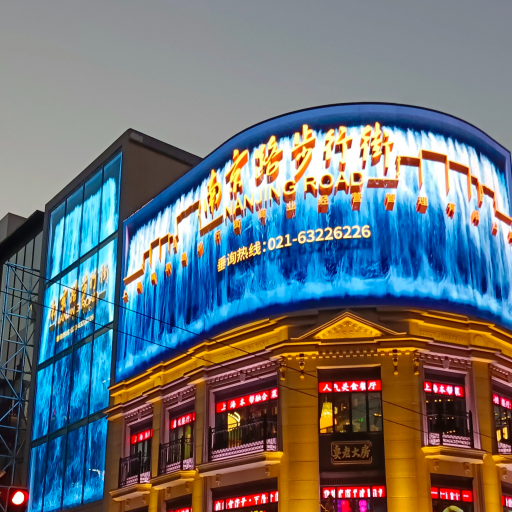
Shopping in Shanghai: Nanjing Road
Hunt for deals on Nanjing Road and Huaihai Road
If you're craving big-city shopping, Nanjing Road delivers. It's loud, packed, and full of lights. You’ll find major brands, local chains, and street food vendors side by side. Start from People’s Square and walk east. The road turns into a pedestrian mall, buzzing with life. Shops blast music. Screens flash ads. Shoppers crowd the sidewalks with bags in both hands. It’s wild—but fun. If you're unsure what to do in Shanghai with only a few hours, hit Nanjing Road for a fast dose of urban energy.
Huaihai Road, on the other hand, feels more refined. It’s quieter, lined with boutiques and international labels. You’ll pass art galleries, coffee shops, and high-end malls. The vibe is less chaotic, more stylish. Locals come here to browse, not just buy. If you're looking for a calmer shopping scene, this is the spot. It’s still central, still fashionable—but with softer edges. These two roads give you a full spectrum of Shanghai retail. One bold, one elegant. Both worth visiting.
Shop indie designers at Anfu Road boutiques
Tired of malls? Head to Anfu Road. It’s where Shanghai’s cool crowd shops. The street is leafy and quiet, far from the skyscrapers. You’ll find small studios and independent boutiques tucked between cafés and bookstores. Everything here feels curated. Clothes hang on wooden racks. Jewelry sparkles on handmade trays. The vibe is slow, creative, and personal. It’s a great pick when deciding what to do in Shanghai that feels different.
Most of the shops here are run by local designers. They’ll talk to you, explain their work, and maybe even tailor a piece on the spot. Prices vary—but you’re buying something special. Not mass-produced. Not seen on every tourist. Anfu Road is more than shopping. It’s about discovering Shanghai’s creative side. You’ll walk away with more than just a bag—you’ll take home a story.
Discover quirky gifts and art in Tianzifang's alleys
Tianzifang isn’t your average market. It’s a maze of narrow alleys packed with surprises. You’ll find handmade candles, ceramic cats, vintage posters, and notebooks with odd slogans. Every corner holds something strange, funny, or beautiful. Looking for what to do in Shanghai that’s fun and offbeat? This is the place.
The shops here live in old shikumen houses—stone-gated homes from the 1930s. You can peek into art studios, sip coffee under drying laundry, or grab a bubble tea while browsing prints. It feels like a secret world inside the city. Touristy? Yes. But also full of charm. Whether you want a one-of-a-kind souvenir or just want to explore somewhere with heart, Tianzifang delivers.
References
Frequently Asked Questions (FAQs)
Q: How do I get around Shanghai as a first-time visitor?
A:It’s easier than you think. The metro is best. Fast, cheap, clean, with English signs. Download a metro map app before you go. It helps plan routes and avoid transfers. Taxis work but many drivers don’t speak English. Carry your destination in Chinese. Apps like DiDi make rides simpler. Buses are cheap but tricky for first-timers. Stick to the metro unless you’re adventurous. Walking is great in some areas. The Bund, French Concession, Nanjing Road are walkable. Wear comfy shoes. Wondering what to do in Shanghai and how to move? Mix metro and walking. It’s efficient and shows more. Avoid rush hours—7–9 a.m. and 5–7 p.m. Metro gets crowded then. Want fun? Rent a bike or use scooters. Some roads are bike-friendly. It’s a cool way to see Shanghai. Knowing transport makes planning easier.
Q: Is 3 days enough to see the highlights of Shanghai?
A:Yes, three days is enough—if you plan it right. You won’t see everything, but you’ll catch the highlights. For first-timers wondering what to do in Shanghai, a well-paced 3-day trip works great.
Day 1: The Iconic View:Start with the Bund. It’s the postcard view—historic buildings meet skyscrapers across the river. Walk along the promenade. Soak in the skyline. Then head to Lujiazui. Take the metro or try the Bund Sightseeing Tunnel—it’s fun and fast. Go up the Shanghai Tower or Oriental Pearl Tower. The view from the top is insane.In the evening, walk down Nanjing Road. It’s loud, busy, and packed with lights. You’ll find food stalls, street performers, and shops. It’s a good intro to what Shanghai feels like after dark.
Day 2: Culture and Calm:Start your day at Yu Garden. It’s peaceful and beautiful. Walk through traditional halls and koi ponds. After that, explore the Old City. Try xiaolongbao (soup dumplings) from a street vendor. It’s a must-eat.In the afternoon, stroll through the French Concession. The tree-lined streets are charming. It’s a quieter part of the city, with old villas and stylish cafes. Stop by Tianzifang—it’s artsy, packed with small shops, and fun to explore.
Day 3: Museums and Temples:Begin at the Shanghai Museum in People’s Square. It’s free and well-organized. Or, if you like modern art, go to the Power Station of Art. Both are great options when thinking about what to do in Shanghai with limited time.After lunch, visit Jing’an Temple or Longhua Temple. These places offer calm in the middle of the chaos. Then head to Xintiandi. It’s touristy but cool. Restaurants, bars, and old-style lanes combine into a fun final stop.
Q:What’s a good mix of modern and traditional sights in one itinerary?
A:Looking for modern and old in Shanghai? You’re lucky. This city mixes both well. Not sure what to do in Shanghai? This plan shows you both. Start at the Bund. It’s classic Shanghai. Old buildings on one side. Tall towers on the other. Take photos. See the difference. Next, go to Yu Garden. Walk past bridges and ponds. Outside is the Old City. Try a hot xiaolongbao. Feel the busy streets. In the afternoon, visit Lujiazui. It’s Shanghai’s future spot. Go up Shanghai Tower or Pearl Tower. The view is amazing. You see the city grow. Later, chill in the French Concession. It’s calm and nice. Drink coffee. Look in shops. Walk under trees. This is what to do in Shanghai to relax. End your day in Xintiandi. Old houses and cool restaurants. Good vibe to finish. Shanghai shows history and progress. No need to pick. That’s why it’s special.
Q: Where can I find authentic Shanghai street food?
A:For real street food, skip the malls. Go straight to the neighborhoods. One top spot? Huanghe Road near People’s Square. It’s full of stalls and small eateries. Try shengjianbao—crispy-bottom soup buns. They’re a must-eat. Another spot? South Yunnan Road. Noodles, sticky rice rolls, grilled skewers—it’s all there. Locals love it. No fancy setups, just fast, tasty food. Want a traditional vibe? Visit Qibao Old Street. It’s touristy but still tasty. Try smoked tofu and sweet rice cakes. Enjoy canals and old buildings too. Wandering here? That’s what to do in Shanghai when hungry. Street food shows real city flavor. Cheap, fast, and always surprising. Bring cash and stay flexible. Follow the longest lines. Locals know best. Wondering what to do in Shanghai at night? Grab snacks and walk old lanes. Don’t skip the stinky tofu—if you’re brave.
